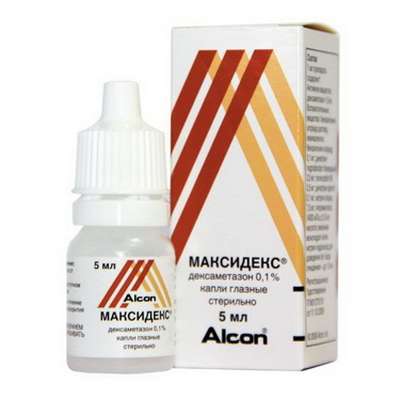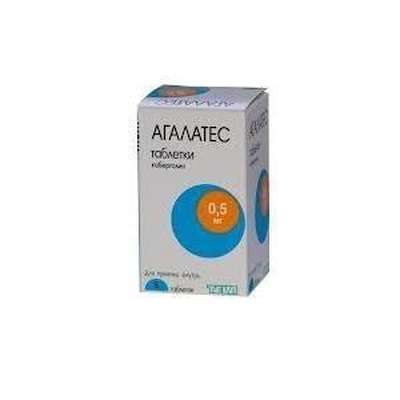Instruction for use: Ivermectin (Ivermectinum)
I want this, give me price
Pharmacological group
dermotropic means
Nosological classification (ICD-10)
L71 Rosacea
Pink acne, Acne Red, Acne pink, Redheads
CAS 70288-86-7
Characteristics of the Ivermectin
Refers to avermectins.
Pharmacology
Pharmacological action - anti-inflammatory local.
Pharmacodynamics
It has an anti-inflammatory effect by suppressing the production of inflammatory cytokines induced by lipopolysaccharides. Anti-inflammatory properties of ivermectin were observed in models of skin inflammatory processes in animals. Ivermectin also causes the death of parasites, mainly through selective binding and high affinity for glutamate-regulated chlorine channels located in neural and muscle cells of invertebrates. The mechanism of action of ivermectin in the treatment of inflammatory skin lesions with rosacea is not completely known, but it can be associated with both anti-inflammatory effects and the ability to cause death of Demodex mites, which in turn can be a factor that causes inflammation of the skin.
Pharmacokinetics
Suction. Ivermectin absorption was evaluated in a clinical study with the participation of adult patients with a severe degree of papulopustular form of rosacea using the maximum allowable dose. In the equilibrium state (after 2 weeks of treatment), the highest mean (± standard deviation) of ivermectin concentration in plasma was observed during (10 ± 8) h after application (Cmax - (2,1 ± 1) ng / ml, range - 0 , 7-4 ng / ml), and the highest mean (± standard deviation) of AUC0-24 was (36 ± 16) ng · h / ml, range - 14-75 ng · h / ml). Systemic exposure of ivermectin reached a plateau by the end of the second week of treatment under equilibrium conditions. With longer treatment in phase III studies, the system exposure index of ivermectin remained the same as after a two-week treatment. Under Css conditions, the system exposure levels of ivermectin (AUC0-24 (36 ± 16) ng · h / ml) were lower than after ingestion of 6 mg ivermectin in healthy volunteers (AUC0-24 (134 ± 66) ng · h / ml) .
Distribution. An in vitro study showed that the binding of ivermectin to blood plasma proteins (predominantly with albumin) is more than 99%. Significant binding of ivermectin with erythrocytes was not observed.
Metabolism. In in vitro studies using human liver microsomes and recombinant CYP450 enzymes, it was noted that ivermectin is metabolized mainly by CYP3A4.
In vitro studies have shown that ivermectin does not inhibit the isoenzymes CYP1A2, CYP2A6, CYP2, B6, CYP2C8, CYP2C9, CYP2C19, CYP2D6, CYP3A4, CYP4A11 or CYP2E1. Ivermectin does not induce the expression of isoenzymes CYP1A2, CYP2, B6, CYP2C9 or CYP3A4) in human hepatocyte culture. The two main metabolites of ivermectin (3 "-O-demethylivermectin and 4a-hydroxyvermectin) were detected during a clinical trial of pharmacokinetics using the maximum permissible dose of this agent and studied in phase II clinical trials." Like the parent compound, metabolites reached equilibrium by the end of the second week of treatment, signs of accumulation were not observed in the period up to 12 weeks In addition, systemic exposure of metabolites (estimated using Cmax and AUC) obtained in the equilibrium state, was much lower than that for ivermectin after ingestion.
Excretion. The final T1 / 2 averaged 6 days (approximately 145 hours, range 92-238 hours) in patients who applied ivermectin to the skin 1 time per day for 28 days during a clinical study of pharmacokinetics using the maximum allowable dose. Excretion from the body depends on the degree of absorption after topical application. The pharmacokinetics of ivermectin have not been studied in patients with impaired hepatic and renal function.
Application of Ivermectin
Inflammation of the skin with rosacea (papulopustular shape) in adult patients.
Contraindications
Hypersensitivity; pregnancy; the period of breastfeeding; age to 18 years (safety and efficacy for this age group has not been studied).
Restrictions for use
Violation of the function of the liver.
pregnancy and lactation
Data on the use of ivermectin in pregnant women are limited. Reproductive toxicity studies with ivermectin oral have shown that it has a teratogenic potential in rats and rabbits, but due to low systemic exposure to external application in the recommended dosage, the risk of fetotoxicity in humans is low. The use of ivermectin during pregnancy is contraindicated.
After oral administration, low concentrations of ivermectin are excreted into breast milk. With external application, the isolation of ivermectin in breast milk has not been studied. Pharmacokinetic and toxicological data obtained from the results of animal studies also indicate the isolation of ivermectin in breast milk. The risk for an infant can not be ruled out. In case of need ivermectin should stop breastfeeding.
Side effects
The most frequent adverse reactions, such as burning sensation, skin irritation, pruritus and dry skin, were noted in less than 1% of patients treated with ivermectin in clinical trials.
From the skin and subcutaneous tissues: often (≥1 / 10) - burning sensation of the skin; infrequent (≥1 / 1000, <1/100) - skin irritation, itching, dry skin; frequency unknown - contact dermatitis, allergic reactions.
Typically, these reactions are mild or moderate and usually weaken with continued therapy.
There were no significant differences in the safety profile in patients aged 18 to 65 years and older.
Interaction
Studies to study the interaction of ivermectin with other drugs have not been conducted. Simultaneous use with other agents for external and systemic use for the treatment of rosacea has not been studied. Caution should be exercised when using simultaneously with strong inhibitors of CYP3A4, since the concentration of ivermectin in blood plasma can be significantly increased.
Overdose
No reports of overdose of ivermectin have been reported.
Symptoms: a skin rash, facial swelling, eyelid edema, headache, dizziness, asthenia, nausea, vomiting, and / or vomiting are most commonly reported in patients with accidental or significant exposure to unknown amounts of veterinary forms of ivermectin per person (ingestion, inhalation, parenteral administration, or exposure to body surface). diarrhea. Other reported adverse reactions include seizures, ataxia, dyspnea, abdominal pain, paresthesia, urticaria, and contact dermatitis.
Treatment: In case of accidental ingestion, symptomatic therapy is carried out, including parenteral administration of fluids and electrolytes, support of breathing (providing oxygen supply and, if necessary, ventilation) and vasopressors (in the presence of a pronounced decrease in blood pressure). To prevent absorption of the ingested ivermectin, vomiting and / or urgent gastric lavage may be indicated, followed by the use of laxatives and other measures to eliminate intoxication.
Routes of administration
Outwardly.
Precautions for Ivermectin
Components of the finished form of ivermectin can cause local reactions from the skin (eg contact dermatitis), allergic reactions (including delayed type), skin irritation.
After application, wash hands.
After drying, you can apply cosmetics.
Influence on the ability to drive vehicles and work with machinery. Ivermectin does not influence or slightly affect the ability to drive vehicles and work with machinery.

 Cart
Cart





